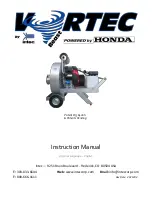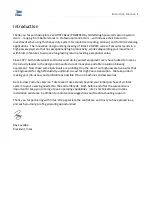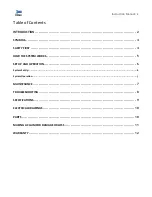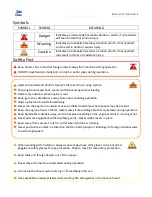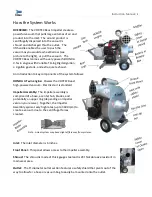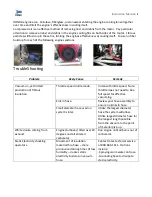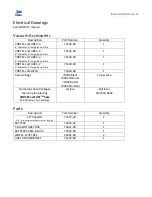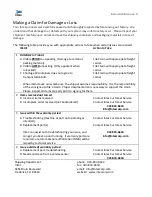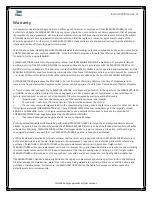
Instruction Manual
|
8
HONDA engine area. Cellulose, fiberglass, or stonewool entering the engine cooling fan will gather
over time and limit the engine’s effectiveness in cooling itself.
Compressed air is an effective method of removing dust and debris from the motor. Pay particular
attention
to remove all dust and debris in the engine cooling fins
on both sides of the motor. Fibrous
particles will build up in these fins, limiting the engines effectiveness at cooling itself. Ensure no fiber
build-up for each of the following engines sections.
TroubleShooting
Problem
Likely Cause
Remedy
Vacuum on, yet limited
production of fibrous
insulation.
Throttle speed in idle mode.
Increase throttle speed. Note:
throttle does not need to be a
full speed for effective
vacuuming.
Kink in hose.
Review your hose assembly to
ensure no kinks in hose.
Small diameter hose used on
system’s inlet.
Utilize the largest diameter
hose the system will allow.
Utilize largest diameter hose for
the longest length possible
from the vacuum to the point
of material pick-up.
White smoke coming from
exhaust.
Engine (turbovac) tilted over 20
degrees and oil entered
carburetor.
Run engine until oil burns out of
carburetor.
Static Electricity shocking
operators.
Movement of insulation
material thru hose
–
more
pronounced during times of low
humidity
–
creates static
electricity build-up in vacuum
hose.
Contact Intec technical service
at 800-666-1611. Options
include:
-
Spraying warm water on hose.
-
Grounding hose to dissipate
static electricity.

